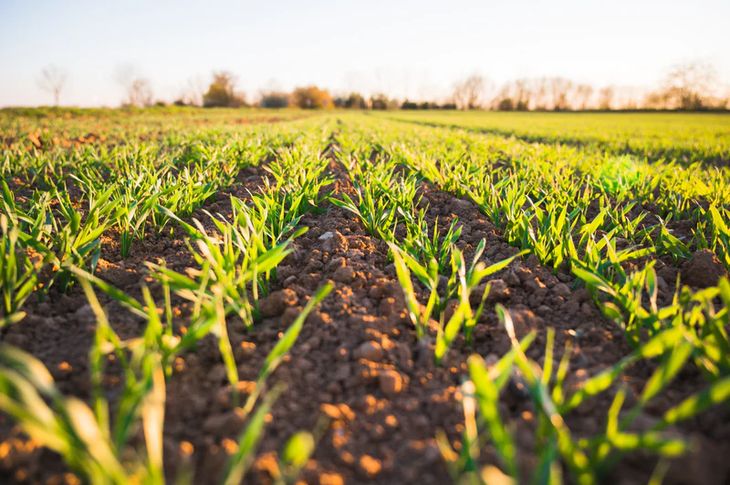Canada: Crops ‘look good’ but slow

Statistics Canada’s latest satellite-based map of vegetative growth in the Canadian Prairies is missing the colour green.
The Crop Condition Assessment Program (CCAP) map for the week ending June 16 was all yellow and brown.
That means crop conditions across the Prairies at this early stage of the growing season are either similar to normal (yellow) or lower than normal (light brown) for this time of year.
Most of Saskatchewan, southeastern Alberta and south-central Manitoba are yellow, while the rest of the Prairie region is light brown.

There isn’t a speck of light green (higher than normal) or dark green (much higher than normal) on the map.
However, the map doesn’t seem to fully reflect the field-level reports being gathered by the provincial governments.
Alberta’s crop report shows that 72.9 percent of the crop was rated good to excellent as of June 18. That compares to the five-year average of 68.8 percent and the 10-year average of 70.2 percent.
Jesse Cole, manager of insurance products and product innovation with the province’s Agriculture Financial Services Corp., said many areas in the western half of Alberta are still a little dry, while it is too wet in some areas of the eastern half.
That is abnormal.
“It’s usually the other way around,” he said.
“If Provost has a good crop, Lacombe is too wet, normally.”
The spring started off with large portions of the province experiencing “one-in-50-year” dry conditions. However, the rain came in May and June.
“That has helped a lot,” he said.
“We’ve got a crop right now in most of the province.”
However, Cole is concerned about that first cut of hay.
“It takes a year or two for some of those forage crops to recover from big drought,” he said.
There are no big insect or disease problems yet, although pea growers will need to apply fungicide if it stays this wet in some areas of the province.
Cole said it has been a cooler than normal year, which, combined with seeding delays, has the crop three days to a week behind normal.
“We could use some heat,” he said.
He also thinks that based on his personal anecdotal observations, the crop mix could be different than what Statistics Canada initially indicated in its March seeding intentions report.
“I’m driving around thinking, ‘geez, there’s a lot of cereals in the ground and I don’t see as much canola as I did last year,’ ” said Cole.
Meghan Rosso, crops extension specialist with Saskatchewan Agriculture, says the CCAP map for her province matches what she is hearing from her crop reporters.
Seeding was initially delayed but finished on time for most regions of the province, but there are still unseeded acres in the north due to excessive moisture.
Crops have been slow to develop, especially the oilseeds, which were 41 percent behind normal development as of June 17.
Oilseeds are some of the main crops grown in the north, where there has been excess moisture and cool temperatures in areas such as Nipawin, Hudson Bay and Meadow Lake.
“That has definitely pushed oilseed development further back.”
Rosso said there is still plenty of time for crops to catch up and they won’t be stressed trying to access moisture, which has been abundant.
“At this point in time, there is definitely good potential throughout many areas of the province,” she said.
Producers will need to monitor for crop diseases. Some growers are already reporting signs of leaf diseases in their cereal crops.
Spring wheat and pulses are the crops of most concern because they are showing early signs of disease damage.
Gophers and grasshoppers have also been problematic.
Anne Kirk, cereal crops specialist with Manitoba Agriculture, said seeding progress is slightly behind normal in her province and so is crop development due to below normal growing degree days.
“It has been fairly cool,” she said.
“The warmer season crops that really like that warmth are slower to grow.”
That includes the province’s corn and soybean crops. The wheat and peas are coping better with the cool conditions.
In general, crops are looking “pretty good” in the province despite the slow start as well as recent hail and wind damage.
“When we start to see some warmer days ahead, hopefully those happen, we’ll start to see the crop really take off,” said Kirk.
That would turn some yellow and brown spots on the CCAP map to shades of green.
Kirk has already noticed that some yellowing of crops caused by early season moisture stress is starting to dissipate.
She is concerned about canola diseases as well as fusarium head blight in cereals.
There have been some reports of tan spot in wheat and flea beetle damage in canola, but nothing out of the ordinary.
Read also
Wheat in Southern Brazil Impacted by Dry Weather and Frosts
Oilseed Industry. Leaders and Strategies in the Times of a Great Change
Black Sea & Danube Region: Oilseed and Vegoil Markets Within Ongoing Transfor...
Serbia. The drought will cause extremely high losses for farmers this year
2023/24 Safrinha Corn in Brazil 91% Harvested
Write to us
Our manager will contact you soon



